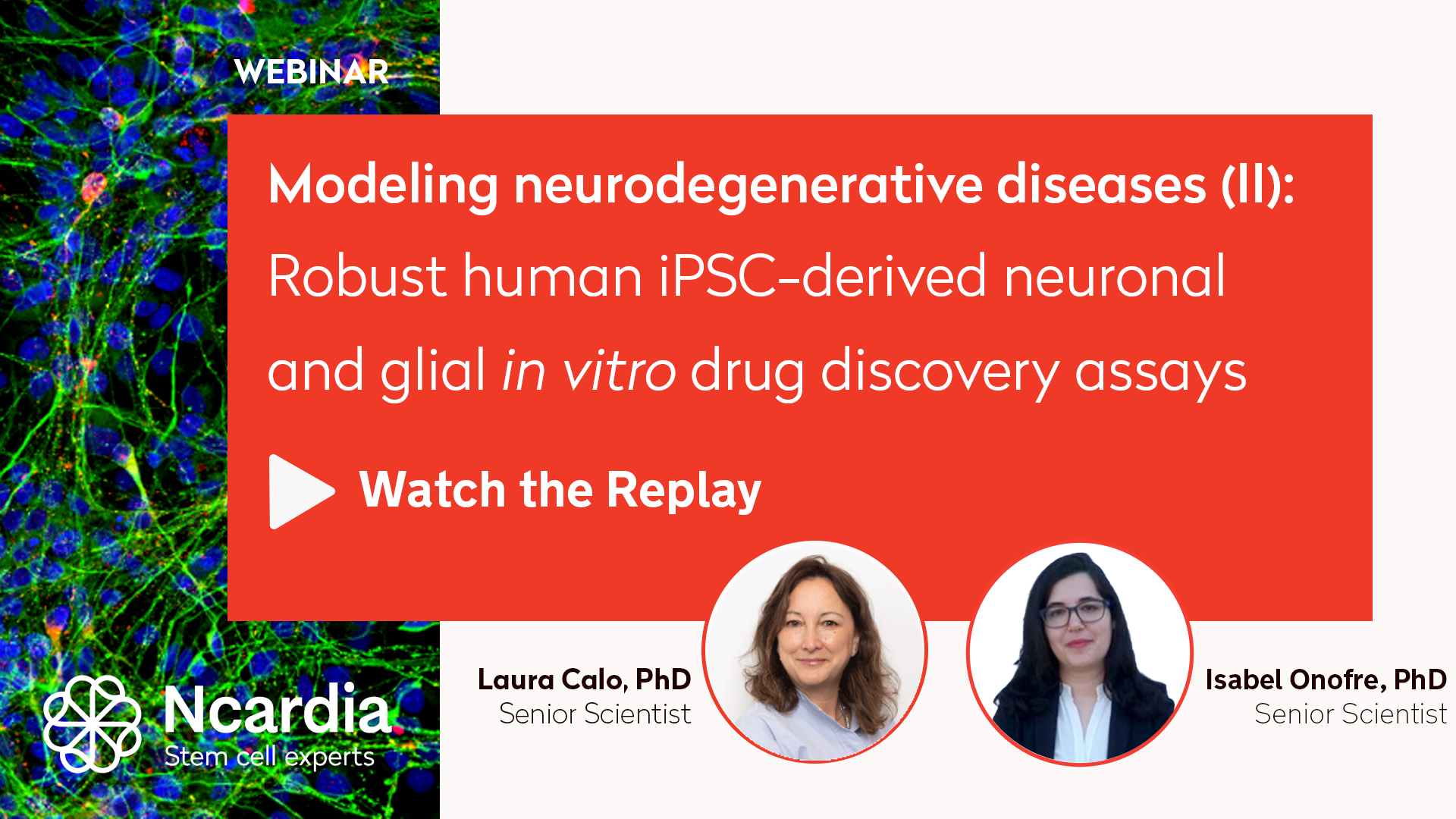The availability of physiologically relevant human models for neurological diseases remains a challenge for preclinical drug discovery. With the emergence of human induced pluripotent stem cell (iPSC) technology, it is now possible to design and manufacture cell types that are critical players in neural disease pathogenesis, such as neurons, astrocytes and microglia. These iPSC-derivatives retain their patient-specific genetic backgrounds and demonstrate clinically relevant phenotypes. They therefore can serve as human in vitro platforms to accelerate the drug development pipeline.
Despite the great potential of human iPSC technology, technical and conceptual challenges for disease-specific assay validation often hinder their use during pre-clinical development.
In this webinar series, our experienced neuroscientists Laura Calo and Isabel Onofre presented Ncardia's solutions for the development of iPSC-derived neurodegenerative disease models, and their application in drug discovery. Watch the sessions to learn about large-scale manufacturing processes for iPSC-derived neuronal sub-populations, microglia and astrocytes and how we used them to develop in vitro predictive assays and models to study compound effects on neurodegeneration-associated phenotypes.
Watch the webinars on-demand:
- Part I: Manufacture & co-culture of human iPSC-derived neuronal cell types
- Part II: Robust human iPSC-derived neuronal and glial in vitro drug discovery assays
- Part III: Human iPSCs-derived neuronal and glial cells as relevant models for Alzheimer's disease


